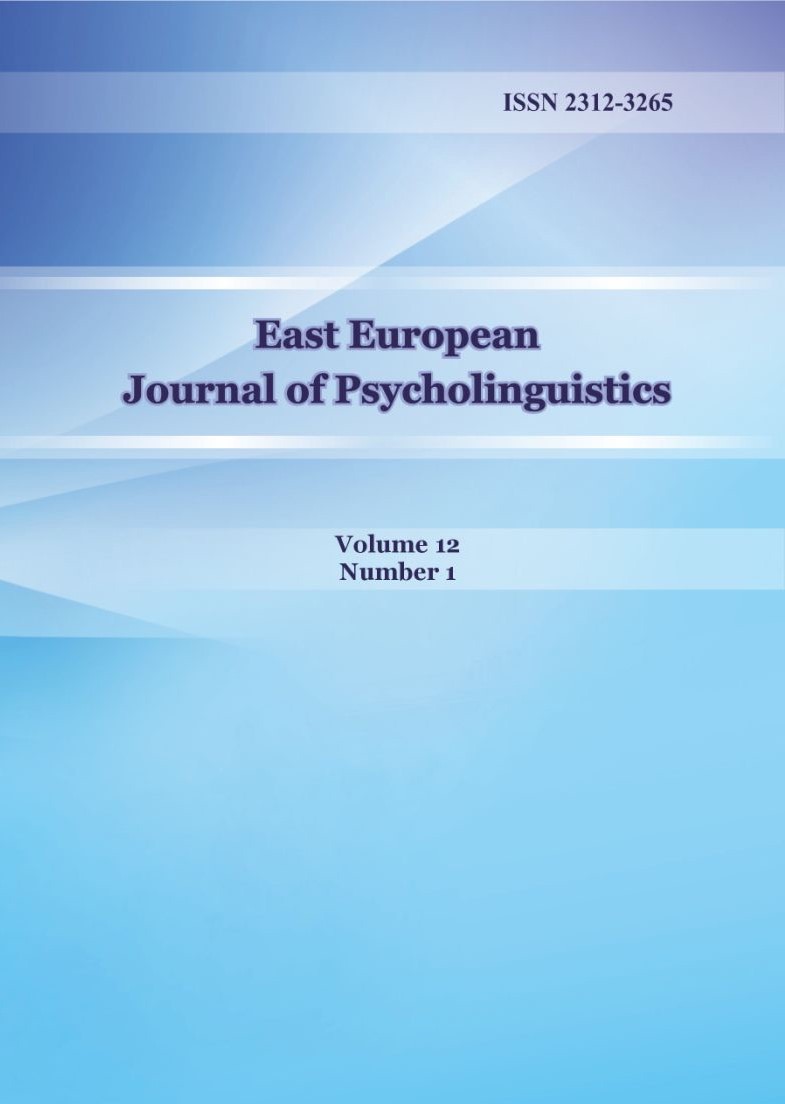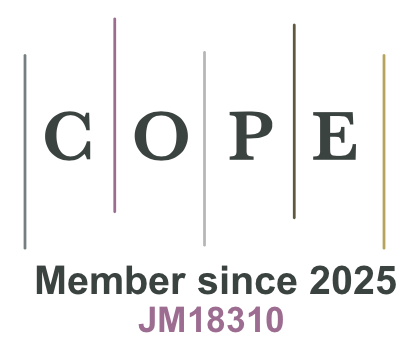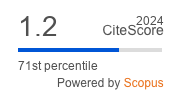The immediate and delayed effects of direct versus indirect written corrective feedback on Turkish EFL learners' accuracy development in using past counterfactual conditionals
DOI:
https://doi.org/10.29038/eejpl.2025.12.1.uluKeywords:
cognitive processing, direct feedback, indirect feedback, past counterfactual conditionals, written corrective feedback.Abstract
Written corrective feedback (WCF) research has extensively examined the effectiveness of direct versus indirect feedback approaches, yet findings remain inconsistent regarding their relative impact on complex grammatical structures. The acquisition of past counterfactual conditionals presents particular challenges for second language learners due to their syntactic and semantic complexity, with limited research investigating feedback effectiveness for this structure. This gap limits theoretical understanding of how different feedback types engage cognitive processing mechanisms during the acquisition of linguistically complex features. This quasi-experimental study investigated the differential effects of direct and indirect WCF on Turkish EFL learners' acquisition of English past counterfactual conditionals. Ninety-four first-year university students were randomly assigned to three groups: Direct WCF (n=32), Indirect WCF (n=32), and Control (n=30). Using a pretest-posttest design with immediate and delayed posttests, participants completed reconstruction tasks over an eight-week period. The Direct WCF group received explicit corrections with correct forms provided above errors, while the Indirect WCF group received metalinguistic clues requiring self-correction. Results showed that direct WCF demonstrated superior immediate effectiveness, but this advantage diminished at delayed posttest, where both treatment groups performed comparably while significantly outperforming the control group. The findings indicate that direct feedback facilitates immediate accuracy improvement in complex grammatical structures, while both feedback types achieve equivalent long-term effectiveness. These results support instructional approaches that employ direct feedback when immediate accuracy is prioritized and suggest that both feedback types engage cognitive processing mechanisms that support sustained learning of complex grammatical features.
Downloads
References
Baddeley, A. (2012). Working memory: Theories, models, and controversies. Annual Review of Psychology, 63, 1-29. https://doi.org/10.1146/annurev-psych-120710-100422
Berkant, H. G., Derer, N. B., & Derer, O. K. (2020). The effects of different types of written corrective feedbacks on students' texting mistakes. English Language Teaching Educational Journal, 3(3), 174–187. https://doi.org/10.12928/eltej.v3i3.3136
Bitchener, J. (2008). Evidence in support of written corrective feedback. Journal of Second Language Writing, 17(2), 102–118. https://doi.org/10.1016/j.jslw.2007.11.004
Bitchener, J. (2021). Written corrective feedback. In Nassaji H., Kartchava E. (Eds.), The Cambridge Handbook of Corrective Feedback in Second Language Learning and Teaching (pp. 207-225). Cambridge University Press.
Bitchener, J., & Knoch, U. (2010). The contribution of written corrective feedback to language development: A ten month investigation. Applied Linguistics, 31(2), 193–214. https://doi.org/10.1093/applin/amp016
Bitchener, J., & Storch, N. (2016). Written corrective feedback for L2 development. Multilingual Matters.
Buckingham, L., & Aktuğ-Ekinci, D. (2017). Interpreting coded feedback on writing: Turkish EFL students' approachesto revision. Journal of English for Academic Purposes, 26, 1–16. https://doi.org/10.1016/j.jeap.2017.01.001
Celce-Murcia, M., & Larsen-Freeman, D. (1999). The grammar book: An ESL/EFL teacher's course (2nd ed.). Heinle & Heinle.
DeKeyser, R. (1995). Learning second language grammar rules: An experiment with a miniature linguistic system. Studies in Second Language Acquisition, 17(3), 379–410. https://doi.org/10.1017/S027226310001425X
DeKeyser, R. (2007). Practice in a second language: Perspectives from applied linguistics and cognitive psychology. Cambridge University Press.
DeKeyser, R. (2015). Skill acquisition theory. In B. VanPatten & J. Williams (Eds.), Theories in second language acquisition: An introduction (2nd ed., pp. 94–112). Routledge.
Ellis, R. (2009). A typology of written corrective feedback types. ELT Journal, 63(2), 97–107. https://doi.org/10.1093/elt/ccn023
Ellis, R., Sheen, Y., Murakami, M., & Takashima, H. (2008). The effects of focused and unfocused written corrective feedback in an English as a foreign language context. System, 36(3), 353–371. https://doi.org/10.1016/j.system.2008.02.001
Ferris, D. R. (2006). Does error feedback help student writers? New evidence on the short- and long-term effects of written error correction. In K. Hyland & F. Hyland (Eds.), Feedback in second language writing: Contexts and issues (pp. 81–104). Cambridge University Press.
Granena, G., & Yilmaz, Y. (2021). Corrective feedback and grammatical complexity: A research synthesis. In Nassaji H., Kartchava E. (Eds.), The Cambridge Handbook of Corrective Feedback in Second Language Learning and Teaching (pp. 754-776). Cambridge University Press.
Guenette, D. (2007). Is feedback pedagogically correct? Research design issues in studies of feedback on writing. Journal of Second Language Writing, 16(1), 40–53. https://doi.org/10.1016/j.jslw.2007.01.001
Hulstijn, J. H., & De Graaff, R. (1994). Under what conditions does explicit knowledge of a second language facilitate the acquisition of implicit knowledge? A research proposal. AILA Review, 11, 97–112.
Izumi, S., Bigelow, M., Fujiwara, M., & Fearnow, S. (1999). Testing the output hypothesis: Effects of output on noticing and second language acquisition. Studies in Second Language Acquisition, 21(3), 421–452. https://doi.org/10.1017/S0272263199003034
Kang, E., & Han, Z. (2015). The efficacy of written corrective feedback in improving L2 written accuracy: A meta-analysis. The Modern Language Journal, 99(1), 1–18. https://doi.org/10.1111/modl.12189
Karim, K., & Nassaji, H. (2020). The revision and transfer effects of direct and indirect comprehensive corrective feedback on ESL students’ writing. Language Teaching Research, 24(4), 519–539. https://doi.org/10.1177/1362168818802469
Lalande, J. F. (1982). Reducing composition errors: An experiment. The Modern Language Journal, 66(2), 140–149. https://doi.org/10.1111/j.1540-4781.1982.tb06973.x
Li, S. (2023). Working memory and second language writing: A systematic review. Studies in Second Language Acquisition, 45(3), 647-679. https://doi.org/10.1017/S0272263123000189
Lim, S. C., & Renandya, W. A. (2020). Efficacy of written corrective feedback in writing instruction: A meta-analysis. The Electronic Journal for English as a Second Language, 24(3), 1-26.
Nassaji, H. (2016). Anniversary article: Interactional feedback in second language teaching and learning: A synthesis and analysis of current research. Language Teaching Research, 20(4), 535–562. https://doi.org/10.1177/1362168816644940
Nameni, A. (2023). A comparative study of direct vs. coded written corrective feedback and revision on writing performance. SN Social Sciences, 3(157), 156-176. https://doi.org/10.1007/s43545-023-00747-y
Nguyen, H. M. & Chu, T. A. (2024). Written corrective feedback in second language writing: A review of research. Reflections, 31(2), 858-870.
Robinson, P. (1996). Learning simple and complex second language rules under implicit, incidental, rule-search, and instructed conditions. Studies in Second Language Acquisition, 18(1), 27–67. https://doi.org/10.1017/S0272263100014674
Schmidt, R. (2001). Attention. In P. Robinson (Ed.), Cognition and second language instruction (pp. 3–32). Cambridge University Press.
Semke, H. D. (1984). Effects of the red pen. Foreign Language Annals, 17(3), 195–202. https://doi.org/10.1111/j.1944-9720.1984.tb01727.x
Shao, J., Zeng, S., & Wu, Y. (Jessie). (2024). The relative effects of direct and indirect written corrective feedback on L2 learning: The moderating role of field dependence/independence. Language Teaching Research, 0(0). https://doi.org/10.1177/13621688241251551
Sheen, Y. (2007). The effect of focused written corrective feedback and language aptitude on ESL learners' acquisition of articles. TESOL Quarterly, 41(2), 255–283. https://doi.org/10.1002/j.1545-7249.2007.tb00059.x
Sheen, Y. (2011). Corrective feedback, individual differences and second language learning. Springer.
Sheppard, K. (1992). Two feedback types: Do they make a difference? RELC Journal, 23(1), 103–110. https://doi.org/10.1177/003368829202300107
Sherpa, S. Z. (2021). Effects of direct and indirect written corrective feedback on Bhutanese learners' grammatical accuracy over time. LEARN Journal: Language Education and Acquisition Research Network, 14(1), 574–603. http://files.eric.ed.gov/fulltext/EJ1284550.pdf
Shintani, N., & Aubrey, S. (2016). The effectiveness of synchronous and asynchronous written corrective feedback on grammatical accuracy in a computer-mediated environment. The Modern Language Journal, 100(1), 296–319. https://doi.org/10.1111/modl.12317
Shintani, N., Ellis, R., & Suzuki, W. (2014). Effects of written feedback and revision on learners' accuracy in using two English grammatical structures. Language Learning, 64(1), 103–131. https://doi.org/10.1111/lang.12029
Stefanou, C., & Revesz, A. (2015). Direct written corrective feedback, learner differences, and the acquisition of second language article use for generic and specific plural reference. The Modern Language Journal, 99(2), 263–282. https://doi.org/10.1111/modl.12212
Swain, M. (1985). Communicative competence: Some roles of comprehensible input and comprehensible output in its development. In S. Gass & C. Madden (Eds.), Input in second language acquisition (pp. 235–253). Newbury House.
Swain, M. (2005). The output hypothesis: Theory and research. In E. Hinkel (Ed.), Handbook of research in second language teaching and learning (pp. 471–483). Lawrence Erlbaum.
Sweller, J. (2017). Cognitive load theory and teaching English as a second language to adult learners. Contact Magazine, 43(1), 5-8.
Truscott, J. (1996). The case against grammar correction in L2 writing classes. Language Learning, 46(2), 327–369. https://doi.org/10.1111/j.1467-1770.1996.tb01238.x
Truscott, J. (1999). The case for "the case against grammar correction in L2 writing classes": A response to Ferris. Journal of Second Language Writing, 8(2), 111–122. https://doi.org/10.1016/S1060-3743(99)80124-6
Truscott, J. (2007). The effect of error correction on learners' ability to write accurately. Journal of Second Language Writing, 16(4), 255–272. https://doi.org/10.1016/j.jslw.2007.06.003
Uludağ, 0. (2025). Examining the differential effects of reformulations and elicitations on Turkish EFL learners’ uptake and use of English past counterfactual conditionals, Porta Linguarum. An International and Interuniversity Journal of Foreign Language Didactics, 44. https://doi.org/10.30827/portalin.vi44.27494
Valizadeh, M. (2020). The effect of comprehensive written corrective feedback on EFL learners’ written syntactic accuracy. Advances in Language and Literary Studies, 11(1), 17–26. https://doi.org/10.7575/aiac.alls.v.11n.1p.17
Valizadeh, M. (2022). The effect of comprehensive written corrective feedback on EFL learners’ written syntactic complexity. Journal of Language and Education, 8(1), 196–208. https://doi.org/10.17323/jle.2022.12052
Van Beuningen, C. G., De Jong, N. H. & Kuiken, F. (2008). The effect of direct and indirect corrective feedback on L2 learners’ written accuracy. ITL-Review of Applied Linguistics, 156, 279–296. https://doi.org/10.2143/ITL.156.0.2034439
Van Beuningen, C. G., De Jong, N. H. & Kuiken, F. (2012). Evidence on the effectiveness of comprehensive error correction in second language writing. Language Learning, 62(1), 1–41. https://doi.org/10.1111/j.1467-9922.2011.00674.x
Appendix
Sample Reconstruction Task
Audio Script: "Career Choices and Life Paths"
[This text would be audio-recorded and played twice to participants]
"Mehmet always dreamed of becoming a software engineer, but his family wanted him to study medicine. If he had followed his passion for technology from the beginning, he would have graduated with a computer science degree by now. His friend Ayşe made a different choice. She wanted to study abroad, but her parents couldn't afford the tuition fees. If her family had had more financial resources, she would have studied international business in Germany.
Now both friends work in Istanbul, but they often wonder about their alternative life paths. Mehmet thinks that if he had been more determined about his career choice, he would have convinced his parents to support his decision. Ayşe believes that if she had applied for more scholarships, she would have found a way to study overseas.
Their stories show how family expectations and financial constraints can shape our futures. If they had made different decisions five years ago, their lives would have taken completely different directions. However, both have learned that success can be achieved through various paths, regardless of the initial choices we make."
Note-taking Sheet
Character | Original Dream | Family / Financial Situation | What would have happened if
Mehmet
Ayşe
Writing Instructions
Based on your notes, reconstruct the text you heard. You have 20 minutes to complete this task. Try to include all the important information and use appropriate grammatical structures.
Downloads
Published
Issue
Section
License
Copyright (c) 2025 Onur Uludağ

This work is licensed under a Creative Commons Attribution 4.0 International License.












 Creative Commons «Attribution» 4.0
Creative Commons «Attribution» 4.0